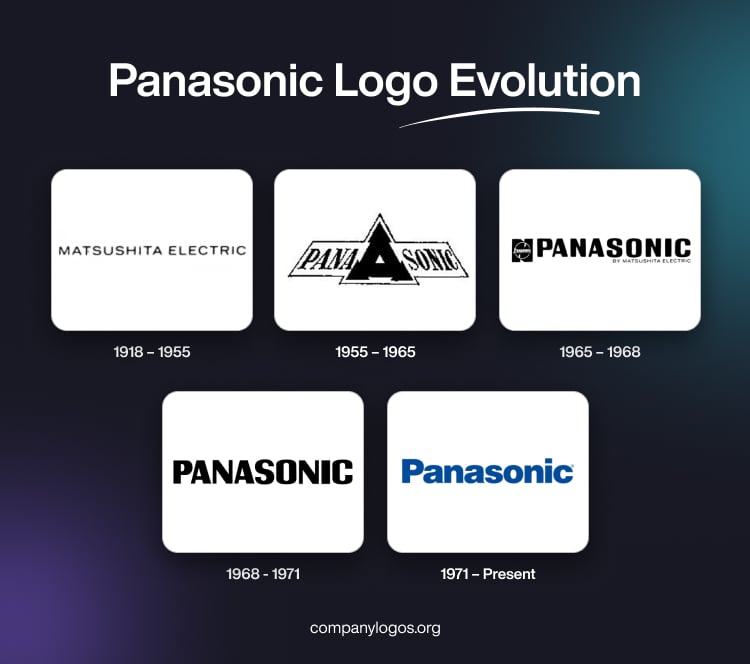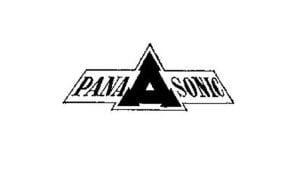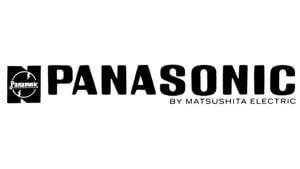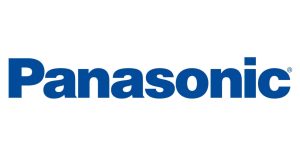
Panasonic Corporation is a global leader in electronics, technology, and innovation. Founded by the visionary entrepreneur Konosuke Matsushita in 1918 in Kadoma, Osaka, Japan, the company began with a small workshop producing lightbulb adapters. Initially, the company used to be known as Matsushita Electric Industrial Co., Ltd., and it adopted the unified name Panasonic in 2008. The company operates across diverse sectors, including consumer electronics, home appliances, automotive systems, energy solutions, industrial equipment, and smart technologies.
The Panasonic logo has evolved from humble beginnings as a mark for Matsushita Electric to one of the world’s most recognised minimalist wordmarks. It demonstrates the brand’s adaptability and enduring commitment to clarity and innovation. The article delves into the evolution of the Panasonic logo, among other details of the company.
The Genesis of the Panasonic Logo (1918 – 1955)
Panasonic’s origins go back to 1918 when Kōnosuke Matsushita founded Matsushita Electric. In the early years, the company branding featured the wordmark “Matsushita Electric” in formal, thin uppercase letters. This minimalist and functional logo focused on reliability and the industrial spirit.

(1955 – 1965)
The “Panasonic” brand was officially introduced in 1955 for the export market. The monochrome logo comprising the “PANASONIC” logotype in uppercase was divided into two parts by a geometric emblem. The inward-tilted emblem featured a bold black triangle with arrow-like elements adorning each of its angles.
The emblem represented diversity, progress, and confidence. There was also a small white triangle in the middle of the large black emblem. The entire logo was surrounded by a thin black outline, which added to its elegance.

(1965 – 1968)
Between 1965 and 1968, Panasonic transitioned to a smoother, bold sans-serif typeface featuring the logotype “PANASONIC” in uppercase. It moved away from geometric motifs towards a modern, friendly aesthetic. A brief “By Matsushita Electric” tagline written below the brand name using a lightweight sans-serif typeface connected the brand to its roots.
The logotype was placed to the right of a monochrome emblem that consisted of a thin white circle with twin streaks at the top and bottom against a black background. The background resembled the letter “N”, and the foreground had a white “Panasonic” inscription at the centre.

(1968 – 1971)
In 1968, the logo became even more streamlined. It featured uppercase heavy black letters written using a modern sans-serif typeface with sharper angles to emphasise clarity and seriousness. However, this logo did not last long and underwent a change just three years hence.

(1971 – Present)
In 1971, Panasonic unveiled its most enduring logo, designed by Unimark International. It was a bold, minimalist wordmark in blue or black that utilised a customised Helvetica sans-serif font. This design emphasised scalability, neutrality, and legibility, qualities ideal for a global technology company. The logo’s enduring simplicity and professionalism have allowed it to remain largely unchanged for over five decades.

The Elements of the Panasonic Logo
Font
The wordmark in the Panasonic logo uses a customised version of Helvetica Black, which is a classic sans-serif typeface. The same has been chosen for its precise geometry, tight kerning, and universal appeal.
Colour
The Panasonic logo uses a combination of two colours – dark blue for the wordmark and white for the background. If dark blue conveys the ideas of consistency and a bright future, white conveys simplicity, purity, and clarity. Besides, white represents a clean and neutral background and allows the blue wordmark to stand out for maximum visibility.
The History of Panasonic
Panasonic was founded in 1918 by Konosuke Matsushita in Osaka, Japan, under the name Matsushita Electric Housewares Manufacturing Works. Its very first product was a two-socket lightbulb adapter, which was followed by improved lamp sockets and battery-powered bicycle lamps. These early innovations addressed household needs and quickly gained popularity. By the 1930s, Matsushita Electric had expanded production and begun establishing a reputation for reliable, affordable products.
During the Second World War, Matsushita Electric produced equipment for Japan’s military. Also, like many Japanese firms, it faced heavy damage and restructuring after the war. However, under Konosuke Matsushita’s leadership, the company recovered and thrived in the postwar era. By the 1950s, it began exporting consumer electronics such as radios and televisions and established factories outside Japan.
Although widely known as Matsushita Electric, the company began using the Panasonic brand name in the late 1950s, first for audio speakers in the United States. In 1961, Konosuke Matsushita visited the U.S. to study global business trends, which influenced the company’s international growth strategy. Panasonic quickly became synonymous with quality consumer electronics. It produced televisions, stereo systems, cameras, and home appliances.
In 1975, it introduced the world’s first VHS home video recorder, which revolutionised media consumption. By the 1980s, Panasonic was competing directly with Sony and other Japanese electronics giants. This way, it cemented its place as one of the largest consumer electronics manufacturers in the world.
During the 1990s, Matsushita Electric diversified into automotive electronics, industrial systems, and communications equipment. At the same time, it consolidated various brands such as National, Technics, and Matsushita under the more globally recognised Panasonic name. In 2003, it officially adopted the Panasonic brand worldwide, and in 2008, the company itself was renamed from Matsushita Electric Industrial Co., Ltd. to Panasonic Corporation.
In the 21st century, Panasonic shifted its focus beyond consumer electronics to broader areas such as energy solutions, housing, and automotive technologies. It partnered with Tesla Motors to produce lithium-ion batteries and establish the Gigafactory in Nevada. It expanded into manufacturing eco-friendly solutions, including solar panels and smart home systems. It continued to produce televisions, cameras, and audio equipment, though it gradually moved away from low-margin sectors.
Panasonic is a diversified global technology leader that operates in over 100 countries. It has businesses that span electronics, energy, automotive, and industrial systems. Based in Kadoma, Osaka, it continues to be guided by Konosuke Matsushita’s founding philosophy of serving society through innovation and technology.
Interesting Facts About Panasonic
- The very first product of Panasonic was a simple two-socket lightbulb adapter. It was created to help households use electricity more efficiently.
- The founder, Konosuke Matsushita, is often called the “God of Management” in Japan due to his innovative business philosophy and focus on serving society through technology.
- The company originally operated as Matsushita Electric and used the “National” brand in Japan. Since “National” couldn’t be registered abroad, they introduced the name Panasonic in 1955. It combined “Pan” (meaning “all”) and “Sonic” (meaning “sound”).
- In 1975, Panasonic introduced the world’s first VHS home video recorder, thereby transforming the way people watched and recorded television.
- Panasonic created the Technics brand for high-end audio equipment. The Technics SL-1200 turntable became iconic in DJ culture worldwide and remains one of the most legendary record players ever made.
- Panasonic has been a worldwide Olympic sponsor since 1988 and provided broadcasting and AV technology for the Games.
- In 2008, the company officially changed its name from Matsushita Electric Industrial Co., Ltd. to Panasonic Corporation.
- While most people know Panasonic for TVs and electronics, the company also operates in housing, automotive solutions, batteries, and industrial systems and even provides smart city technologies.
- Panasonic is a key partner of Tesla. It supplies batteries for electric cars and is working together on the massive Gigafactory in Nevada, U.S.
- Panasonic has pledged to achieve carbon neutrality by 2030 in its operations and by 2050 across its entire value chain. This makes it one of the most eco-conscious global tech giants.
Finally
The evolution of the Panasonic logo reflects the journey of the company from a small Japanese manufacturer to a globally recognised technology leader. Over the decades, the logo has adopted a clean, bold wordmark in a deep blue colour to symbolise trust, reliability, and innovation, as well as reinforce the brand’s global consistency. The Panasonic logo stands as a timeless emblem of quality and innovation. It carries forward the vision of Konosuke Matsushita to improve lives through technology.